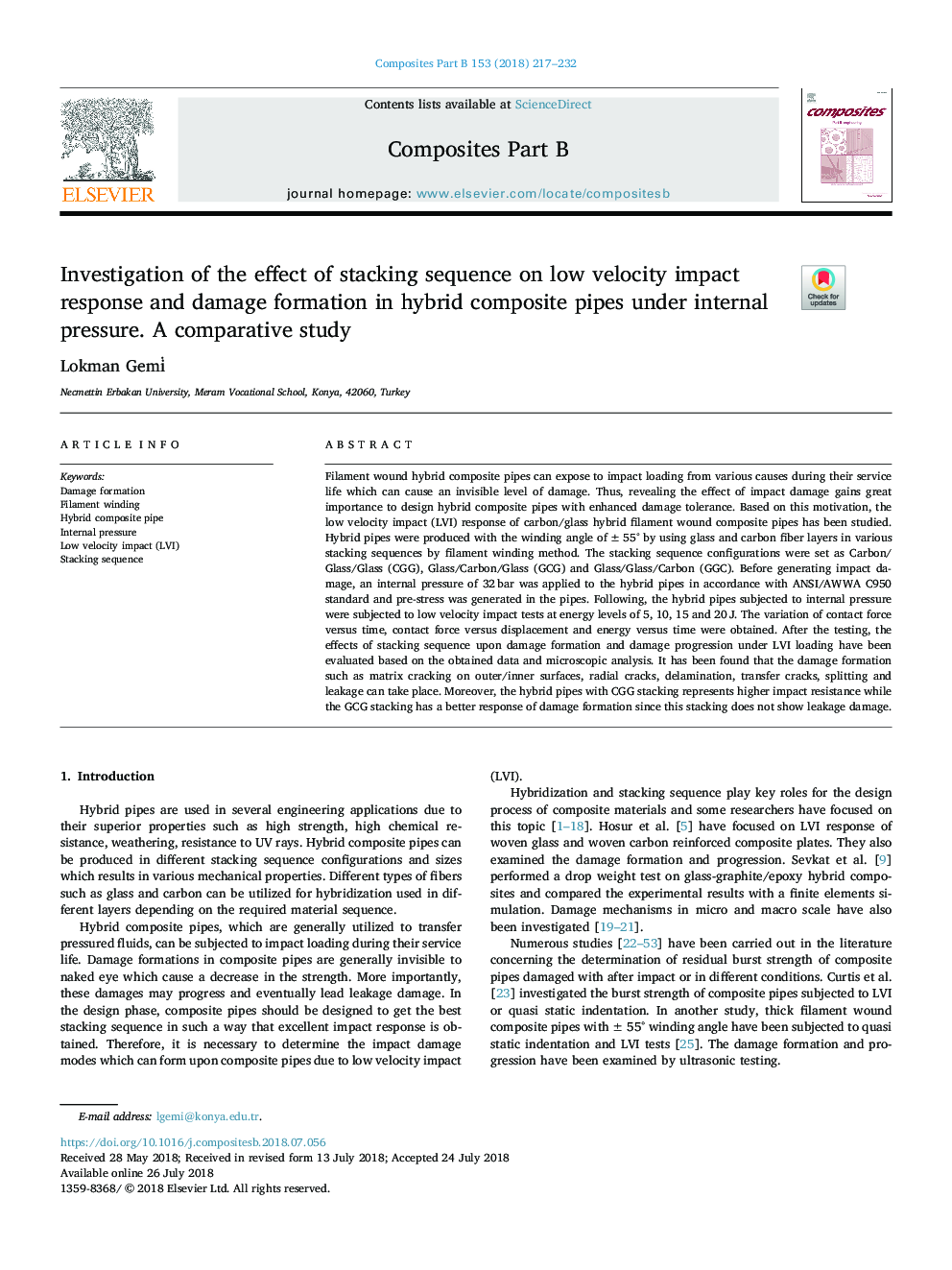| Article ID | Journal | Published Year | Pages | File Type |
|---|---|---|---|---|
| 7211773 | Composites Part B: Engineering | 2018 | 16 Pages |
Abstract
Filament wound hybrid composite pipes can expose to impact loading from various causes during their service life which can cause an invisible level of damage. Thus, revealing the effect of impact damage gains great importance to design hybrid composite pipes with enhanced damage tolerance. Based on this motivation, the low velocity impact (LVI) response of carbon/glass hybrid filament wound composite pipes has been studied. Hybrid pipes were produced with the winding angle of ±55° by using glass and carbon fiber layers in various stacking sequences by filament winding method. The stacking sequence configurations were set as Carbon/Glass/Glass (CGG), Glass/Carbon/Glass (GCG) and Glass/Glass/Carbon (GGC). Before generating impact damage, an internal pressure of 32â¯bar was applied to the hybrid pipes in accordance with ANSI/AWWA C950 standard and pre-stress was generated in the pipes. Following, the hybrid pipes subjected to internal pressure were subjected to low velocity impact tests at energy levels of 5, 10, 15 and 20â¯J. The variation of contact force versus time, contact force versus displacement and energy versus time were obtained. After the testing, the effects of stacking sequence upon damage formation and damage progression under LVI loading have been evaluated based on the obtained data and microscopic analysis. It has been found that the damage formation such as matrix cracking on outer/inner surfaces, radial cracks, delamination, transfer cracks, splitting and leakage can take place. Moreover, the hybrid pipes with CGG stacking represents higher impact resistance while the GCG stacking has a better response of damage formation since this stacking does not show leakage damage.
Keywords
Related Topics
Physical Sciences and Engineering
Engineering
Engineering (General)
Authors
Lokman Gemi,
